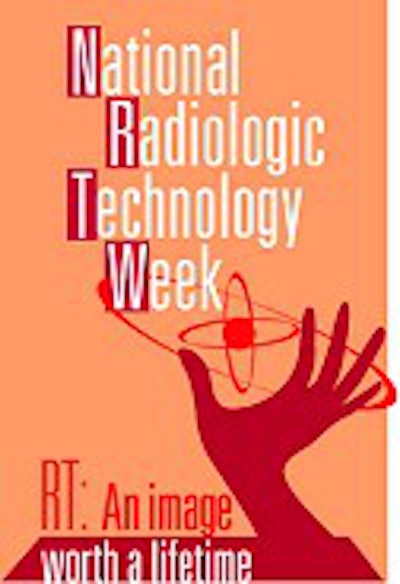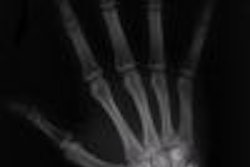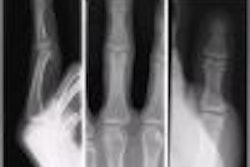
There are currently 225,000 registered technologists in the U.S., making it the largest group of allied health professionals. But few outside of healthcare understand what they do -- and many of those within the industry are not entirely sure of the RT role, either.
The American Society of Radiologic Technologists (ASRT) hopes to change all that. The organization has launched a slew of initiatives to bolster the profession’s image, both inside and outside the hospital. The ASRT hopes to create a new career path for RTs -- an advanced position called the radiologist assistant. It has also developed a recruitment and retention toolkit to address the national RT staffing shortage.
But even as the ASRT celebrates reaching the 100,000-member mark this month, the organization finds itself fighting the image of radiologic technology as a career with limited pay, little chance for advancement, and haphazard regulation. The RT shortage hasn’t helped.
Hospitals and imaging centers are competing fiercely for RTs, with sign-on rewards that have created a cadre of RT "bonus-jumpers" continually on the lookout for greener pastures and paychecks. A few states now allow a limited-licensed technician to perform general x-ray during weekends and other times when registered RTs are not available. And in 15 states and the District of Columbia, those performing imaging exams do not need any education or certification at all.
The state of affairs is, in one radiology manager’s words, a mess.
"The whole staffing situation -- which is a direct result of our inability to retain RTs -- is another shot in the foot to our attempts to be considered professionals," said Annemarie Sundquist, president of the California Society of Radiologic Technologists. "Our inability to organize as a group limits the ways we can address these issues. Instead of coming together, we are more divided than ever."
About 40% of the nation’s RTs belong to the ASRT. Due to aggressive recruitment efforts, membership has jumped dramatically in the past year, increasing by 500 members per month since August, according to the organization.
"Reaching the 100,000-member milestone is significant because it gives the ASRT and the entire profession a stronger voice," said Ceela McElveny, director of public relations for the Albuquerque, NM-based organization.
And members or not, every RT benefits from the legislative and professional advocacy that the ASRT provides, said Penny Brinkman, radiology program director at Kaskaskia College in Nashville, IL.
The ASRT affects RTs in other ways as well. For example, the ASRT develops the curriculum used in radiography and radiation therapy classrooms.
But whether it is Capitol Hill networking or forging alliances with other professional organizations, the ASRT could wield even more clout with more members, Brinkman said.
With the exception of unionization, the ASRT is the only hope for RTs who desire to achieve professional goals such as better pay, increased on-the-job respect, and increased career opportunities, added Brinkman, who is also president of the Illinois State Society of Radiologic Technologists.
"Things happen because of representation by numbers," she said. "The more members that join the ASRT, the more services the organization can provide, and the more influential the society becomes."
For example, last year a proposal seriously considered by the American College of Radiology would have changed that organization’s position on the educational standard for imaging personnel -- a stance prompted by the RT shortage, said Bernadette Garofola, assistant chief radiation therapist at Thomas Jefferson University Hospital in Philadelphia.
"The ASRT started a national campaign among its members to encourage radiologists to vote against the resolution at the annual conference," Garofola said. "The resolution was rescinded and never even made it to the floor for a vote."
The group has also successfully partnered with other professional groups, and created a database of research for use in legislative pursuits, such as federal minimum educational standards, Brinkman said.
"Most importantly, the ASRT has directed its attention to better informing the people our profession serves: patients," Brinkman said. The association has an expanded area of its Web site devoted to patient education.
"The ASRT sees itself as an advocate not only for radiologic technologists, but also for radiology patients," added McElveny. "By fighting for professional and educational standards, the ASRT ultimately helps ensure quality patient care."
One service cited as valuable by member RTs is the organization’s surveys of technologist salaries across the country. The surveys help RTs compare career opportunities, said Janis Brown, lead nuclear medicine technologist at St. Joseph’s Mayo Health System in Mankato, MN. Brown and others who spoke to AuntMinnie.com also applauded the ASRT’s concept of the radiologist assistant.
But a membership organization can only do so much. Bolstering an image and creating new career and educational pathways is one thing. Professionalism, however, comes from within, Brown said.
Brinkman of Illinois believes membership in a professional organization is so important that it should be mandatory for all RTs. The Illinois society may investigate that possibility in the future, she said.
One area in which the ASRT could improve is in the way it informs members about the multiple activities and programs it promotes, Garofola said.
Like all organizations, the ASRT can be overly political, Brown said. But the bottom line is that the organization is relevant and needed.
"I see other technologists cruising on the shirttails of those working hard to make our profession better," she said. "It’s a hard pill to swallow, but the ASRT has swallowed it and is making it better for us all."
By Deborah R. DakinsAuntMinnie.com contributing writer
November 8, 2002
Related Reading
ASRT offers creative solutions to stem RT shortage, July 30, 2002
Radiology extenders -- the answer to the RT personnel shortage?, September 19, 2002
RT updates: JRCERT extends deadline; CSRT ponders representation, October 31, 2001
California certified RTs ponder pros, cons of unionizing, September 13, 2001
Copyright © 2002 AuntMinnie.com



















